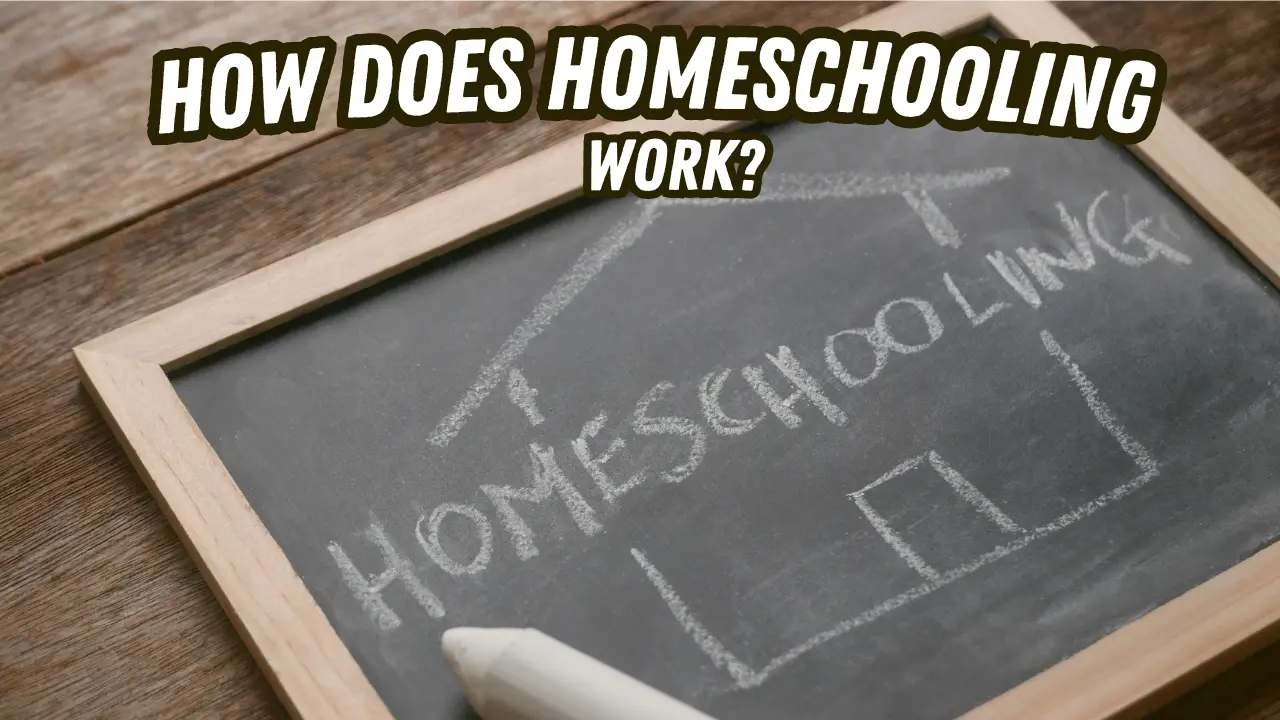How Does Homeschooling Work? Understanding How Homeschooling Functions and How Homeschooling Succeeds
Welcome! In this article, we go over the dynamic world of homeschooling. An educational approach that empowers parents and children alike. Discover how homeschooling functions as a personalized journey, allowing learners to thrive in unique environments tailored to their needs. By fostering creativity, flexibility, and independence, homeschooling is reshaping education today. Join us as we explore the essential aspects of this innovative educational choice, unlocking the keys to its success, and offering insights into how you can embark on a fulfilling homeschooling journey with confidence and enthusiasm.
Key Highlights
- As a homeschool parent, learn how to integrate academics with physical training for a comprehensive homeschool education.
- Homeschooling offers flexibility and personalized learning, enabling students to advance at their own pace.
- Understanding legal aspects and state requirements is crucial when starting a homeschool program.
- Parents play a pivotal role in homeschooling, serving as educators and curriculum planners for their children.
- Balancing educational tools with physical activity is essential for fostering well-rounded development in homeschooled students.

How Does Homeschooling Work: An Overview
Understanding how homeschooling works is essential for parents considering alternatives outside of conventional schools. With homeschooling, learning is customized to fit each child’s unique needs, fostering a more engaging educational experience. But how does homeschooling work in practice, and what makes it successful? At its core, homeschooling works by allowing parents to switch from the traditional school system to a more flexible, personalized approach. This method involves choosing the right programs and educational tools that align with their child’s interests and strengths.
For instance, I support homeschooling by integrating academics with physical training, ensuring a well-rounded education. Homeschooling offers the freedom to explore diverse subjects through tailored curricula, making the learning process more captivating than ever. It’s about balancing structured learning with experiential, hands-on activities, all within a nurturing home environment.
Homeschooling requires commitment and involvement from parents, but the benefits are plentiful. Students often gain greater confidence, independence, and a love for learning that extends beyond the academic realm. Embracing this educational path can transform how students perceive learning and internalize knowledge, proving that homeschooling can indeed succeed. With the right resources and determination, parents can cultivate an atmosphere where their children thrive, enabling success outside of conventional schools. Are you ready to discover a new approach to education?
Key Components of Homeschooling Success
Understanding how a homeschool environment contributes to educational success requires exploring several key components. For many parents, the primary motivation behind choosing homeschooling is the ability to tailor the curriculum to suit their child’s unique strengths and needs. Unlike traditional schooling, a homeschool curriculum offers flexibility, allowing families to adjust the pace and content of lessons based on the student’s progress and interests. Adaptability is a significant factor in making homeschooling work effectively.
Another crucial element is the availability of quality resources. Parents have access to a plethora of educational materials, from online platforms to local homeschool groups, that support a dynamic learning experience. Engaging with a supportive homeschool group further enriches the educational journey by providing a community for both parents and students. These groups often share resources, host events, and offer a chance for kids to socialize, enhancing the overall homeschool experience.
The success of homeschooling also hinges on the active involvement of parents. As primary educators, parents guide the learning process, ensuring that educational goals align with their child’s capabilities and interests. Balancing educational tools with physical training is another component that contributes to a successful homeschool program, promoting well-rounded development. Ultimately, the customizable nature of homeschooling enables families to pursue an enriched and focused education, paving the way for academic and personal success.
Navigating the Legal Aspects of Homeschooling
Understanding the legal aspects of homeschooling is crucial for parents considering this educational path. Laws related to homeschooling vary significantly from state to state, necessitating parents to become well-versed in their specific state’s requirements. In Massachusetts, I am able to help parents have access to the necessary resources or guide them to groups that can guide them through the often complex legality of homeschooling.
Each state has different laws regarding the notification and instructional requirements that parents must adhere to, and these legal obligations can impact the structure of your homeschooling program. I help parents navigate these laws to create a schooling environment that meets state requirements while still offering flexibility and personalization to fit each child’s needs.
Parents must file appropriate documentation with their state’s educational authorities to legally homeschool their children. Other homeschool parents and support groups play a crucial role in sharing experiences and strategies to succeed within the prescribed legal framework. By understanding and following the legal aspects of homeschooling, parents can focus on developing a high-quality educational experience that includes both academic pursuits and physical training.
The Role of Parents in Homeschooling
In the realm of homeschooling, parents play a pivotal role by acting as both educators and facilitators of learning. I understand the transformative power that involved parents bring to their children’s education. Parents are often responsible for crafting a curriculum that aligns with their child’s unique learning style and interests. This personalized curriculum allows families to tailor education in a way that traditional schools often cannot, fostering a deep understanding and love for learning in children.
Homeschooling provides parents with the flexibility to support their children’s educational journey by deciding which resources and materials best suit their needs, thus ensuring a comprehensive and diverse learning experience. In this dynamic learning environment, parents provide guidance and support, helping their children navigate the various educational tools available, which enriches the learning process. Through homeschooling, families can build strong bonds as they embark on this educational adventure together.
Supporting a Personalized Curriculum
It is important to understand the importance of customizing a homeschool plan that supports each student’s unique learning style and pace. Supporting a personalized curriculum means embracing a dynamic approach that recognizes the diverse needs of students, enhancing their learning experience. By focusing on a curriculum tailored to each child, we’re able to nurture individual strengths and interests, fostering an environment that brings out the best in our students. This customized approach calls for a well-thought-out program that integrates core subjects with electives, ensuring a balanced learning experience.
In the homeschool setting, developing a customized curriculum isn’t just about academic success; it’s about creating a nurturing atmosphere where students thrive. This involves assembling the right supplies and resources that align with the educational goals set for your child. Figuring out what curriculum to use or how to personalize it to your child’s needs can sometimes be difficult. This is why I am committed to supporting parents by providing expert guidance in crafting a curriculum that addresses each student’s needs, ensuring a cohesive and comprehensive learning plan. If this is something that interests you, please feel free to contact me.
Balancing Educational Tools with Physical Training
In the dynamic landscape of homeschooling, achieving a balance between educational tools and physical training is crucial to fostering well-rounded development in students. In my household, we understand that while academic subjects form the core of education, integrating physical activities into a student’s routine is equally important. It’s not just about sitting for long hours; it’s about leveraging diverse resources that cater to both the intellectual and physical growth of our students. By encouraging physical activities alongside traditional learning, we promote high testing performance and overall student well-being.
My approach focuses on creating an environment where academic work harmonizes seamlessly with time invested in health and fitness. Understanding how homeschooling functions effectively involves recognizing that a high-quality education is not limited to classroom experiences. The use of innovative educational tools is balanced with strategic physical exercise plans, ensuring students are always in top form to tackle academic challenges. Parents can rest assured that their children will not only achieve academic excellence but also develop resilience and strength, making them well-prepared for future school environments.
Crafting the right balance means that each child benefits from a personalized learning experience that’s aligned with our health commitment to nurturing high achievers both in mind and body. If you need help designing a fitness plan for your child, please reach out.
Creating an Effective Homeschool Curriculum
Creating an effective homeschool curriculum is a cornerstone for any successful homeschooling journey. This means offering courses in core subjects like mathematics, science, and language arts, as well as incorporating physical training to keep homeschoolers active and healthy.
An effective curriculum is more than just a list of subjects; it’s about tailoring the learning to fit different styles and needs. Each grade level should challenge students while respecting their individual learning curves.
It’s essential to choose teaching styles that engage students and make learning enjoyable. Consider integrating project-based learning (my favorite), hands-on activities, and collaborative projects to encourage a deeper understanding of the subjects. With the flexibility homeschooling offers, parents and educators can create courses that are as unique as each student. Whether your child excels in science or loves creative writing, the right curriculum can nurture their interests and skills.
For those new to homeschooling, understanding how to start can be daunting. Remember, the goal is to cultivate a love for learning while ensuring students are appropriately challenged and prepared for each educational milestone.
Customizing Learning to Fit Your Child’s Needs
I believe in the power of customizing learning experiences to fit the special needs of individual students and children. Homeschooling offers a unique opportunity to provide a personalized education plan that caters specifically to your child’s strengths and areas for improvement. Unlike traditional education systems, homeschooling at home or a microschool empowers parents to work closely with educators to customize every aspect of the curriculum. This ensures that each child’s learning path is aligned with their needs, passions, and future goals.
Every child is special, and as parents, our goal is to support their innate desire to learn.
Integrating Effective Testing Methods
Understanding the importance of effective testing methods is vital to monitoring student progress and enhancing their educational experience. For homeschoolers, assessments are not simply about regurgitating information from reading programs; they’re about understanding and application of knowledge. By employing a variety of innovative testing methods, we can tailor assessments that accurately reflect students’ individual learning paths. These methods can include traditional tests, project-based assessments, and portfolio evaluations, offering a comprehensive view of a student’s understanding.
While you may feel that testing your kids is necessary, remember that you are not doing traditional school at your house. At least, that should not be the goal. You want to highlight their strengths and identify areas for growth. By integrating rigorous and varied school tests, we ensure that each child’s unique abilities are supported through personalized assessment methods, all while maintaining the flexibility that homeschooling offers. This flexibility can mean a significant departure from standard school testing and can allow students to showcase their skills and knowledge in environments that boost their confidence and independence.
Addressing Challenges in Homeschooling
Addressing challenges in homeschooling is an important aspect that ensures an enriching and successful educational experience for families. Homeschooling offers many benefits, yet it requires parents to skillfully balance various elements to create a nurturing learning environment.
One of the primary challenges homeschooling families face is time management. Parents often need to juggle work responsibilities while dedicating ample time to educational activities. It may seem daunting at first, but by establishing a structured schedule and fostering a flexible learning atmosphere, families can effectively manage their homeschooling time.
Another significant challenge is addressing the diverse needs of each child while ensuring they receive a comprehensive education. This requires thoughtful planning to customize lessons that align with each child’s interests and learning pace while also integrating essential subjects.
By recognizing and addressing these challenges, homeschooling families can cultivate a balanced and dynamic education. This ensures that homeschooled students not only meet academic objectives but also develop crucial life skills and confidence to excel in various endeavors. Embracing and overcoming these challenges makes homeschooling a rewarding journey for families committed to nurturing their children’s full potential.
Finding the Right Balance Between Work and Learning
Finding the right balance between work and learning is crucial for homeschool success. I understand that homeschool parents need to create a harmonious environment where education thrives alongside other responsibilities. By effectively utilizing resources and support available, homeschoolers can integrate both academic work and extracurricular activities into their daily schedule.
One strategy to achieve this balance is to structure the day with dedicated time blocks for both learning subjects and physical activities. This ensures children maintain focus on their studies while also allowing time to engage in sports and other interests, enhancing overall development. Many schools emphasize the importance of integrating physical training to keep students motivated and healthy.
Meanwhile, parents need to develop a flexible approach, tailoring lessons to accommodate unexpected routines. This personalized learning model empowers children to explore their interests and progress at their own pace. With a strong support network, homeschool parents can confidently guide their children to educational and personal success, ensuring they have everything they need without compromising on other responsibilities. Embracing this dynamic approach empowers students to enjoy a well-rounded education experience that prioritizes both academic and physical development. Check out my other article about homeschooling benefits if you would like to learn more.




